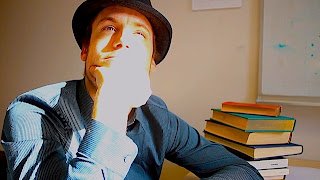This piece was written by my close friend, fellow philosopher, and co-worker Jacob Roundtree. His blog can be found at ww.jacobroundtree.com. I implore you to check him out.
The notion that an unhampered market economy would feature a significantly lower degree of economic inequality than that found in our statist economic order has no foundation in the teachings of economics. The Carsonian doctrine that the market process tends towards the equalization of incomes is an arbitrary opinion founded on the whimsical preferences of its adherents. It is highly possible and I think quite probable that a more unequal distribution of income would prevail in an unhampered market economy than would in our present economic order.
The libertarian must not concern herself with the level of economic inequality, per se.
As libertarians we are fundamentally committed to erecting the social order that preserves the liberty of all persons and as such provides all with the environment in which they can fulfill their humanity. In other words we are ultimately concerned with the dignity and well-being of all peaceful people. Economics teaches us in no uncertain terms that an unhampered market necessarily tends towards the greatest satisfaction of the desires of all participants.
When discussing the issue of income distribution what worries us is a maldistribution, which is not necessarily an unequal distribution. If, for example, the state intervenes into society, so as to equalize incomes, we would have a wholly unjust distribution of income. So for the Carsonians to at all focus on the question of income inequality is for them to completely misunderstand interventionism’s devastating and corrupting effects on the market order.
Interventionism is a hazard because it disintegrates the social bond by undermining the market’s institutional framework. The inequality of income that emerges from the interventionist process is a by-product and not of central concern.
Not only do the Carsonians mistakenly see economic inequality as a problem, but they fail to recognize the essential role it plays in the market process.
As Mises argues, the market distributes income according to the contribution each individual makes to the satisfaction of consumer wants. Consequently the market aids individuals in the discovery of their comparative advantage and incentivizes them to contribute the maximum effort to the social system of production. Without such an unequal distribution, either political authorities would have to compel individuals by force to contribute their share or the system of social cooperation would completely disintegrate.
As Mises contends, “only because inequality of wealth is possible in our social order, only because it stimulates everyone to produce as much as he can and at the lowest cost, does mankind today have at its disposal the total annual wealth now available for consumption.” (Liberalism 2005, p.12)
Mises goes on to show that economic inequality performs another indispensable social function in the form of luxury consumption. Mises begins by identifying luxury as a relative concept insofar as it “consists in a way of living that stands in sharp contrast to that of the great mass of one’s contemporaries.” (Liberalism 2005, p.13)
As he argues, luxury consumption effectively subsidizes the production, innovative development and introduction of new consumer goods to the market. Consequently, luxury consumption affords entrepreneurs the means to discover production methods by which they can mass produce innovative products. Mises presents several examples of formerly luxurious items that are now mass consumer goods, including the fork, the automobile and the bathroom.
So the next time one of the newly fashionable left-libertarians wants to think he’s standing with the masses by decrying the luxurious lifestyle of the rich, he should consider the following words of wisdom from Mises:
“Luxury consumption provides industry with the stimulus to discover and introduce new things. It is one of the dynamic factors in our economy. To it we owe the progressive innovations by which the standard of living of all strata of the population has been gradually raised” (Liberalism, p.13)
Jacobroundtree.com (The Social Rationalist) CHECK IT OUT






